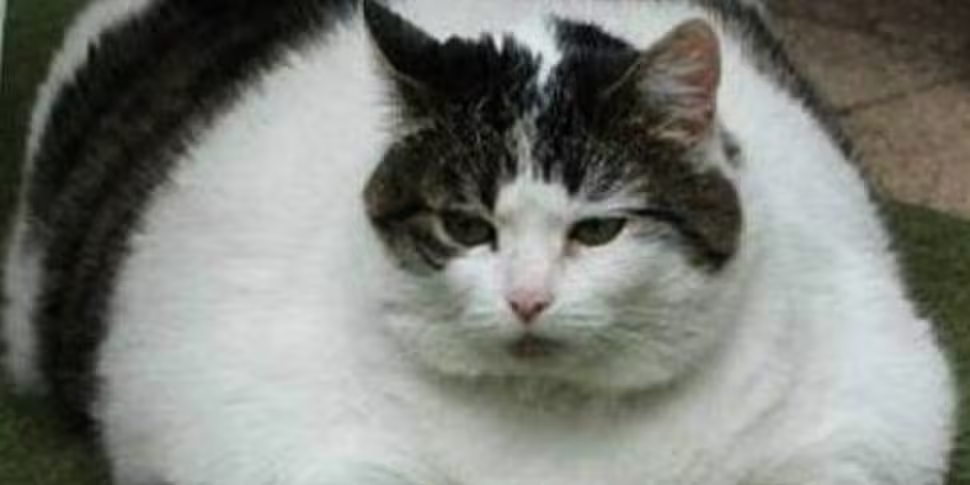This post originally appeared on Pete Wedderburn's blog:
In this week's vet slot, Pete Wedderburn discussed the issue of pet obesity. In this article he addresses some of the key issues for concerned pet-owners.
Pet obesity is astonishingly common
The proportion of overweight and obese pets varies from study to study, but it’s thought to be between 33 and 58%. It’s now recognised that obesity is a state of chronic inflammation. When pets suffer from obesity-related diseases such as arthritis, it isn’t just because of the excess weight putting stress on the joints. The increased likelihood of diabetes isn’t due to excessive blood sugars. Instead, recent research has identified over 100 hormones, cytokines and other metabolites that are thought to adversely affect bodily functions. So when owners allow their pets to become obese, they are doing much more than inflicting excessive body weight on their animals: they are actually causing physical disease.
Owners are inadvertently causing their pets to have premature deaths: while obese humans live, on average, for nine years less than people of normal weight, for obese pets, the difference is two years.
Definitions of obesity
Definitions are important: they are well defined for both humans and animals. The Body Mass Index (BMI) in humans means the body weight in kilograms divided by the height in metres squared.
(e.g. 50kg person, 1.5m tall, would be 50 / (1.5 x 1.5) = 50/2.25 = 22.22)
“Normal” means a BMI of between 18 and 25
“Overweight” means a BMI of between 25 and 30
“Obese” means a BMI of over 30
Clearly BMI cannot be applied to animals: there is too much variation in body dimensions between species and breeds. However the same broad definitions apply, with “overweight” being “carrying a bit too much weight” and “obese” meaning “carrying much too much weight”.
So how do you know if your pet is overweight?
1) Assessing pet’s weight
a) Weigh your pet: most vets have walk-on electronic scales
b) Body condition score – this is more of a “body shape assessment” – on a scale of 1 to 5
1 = Emaciated
Ribs, lumbar vertebrae, pelvic bones and all body prominences evident from a distance. No discernible body fat. Obvious absence of muscle mass.
2 = Thin
Ribs easily palpated and may be visible with no palpable fat. Tops of lumbar vertebrae visible. Pelvic bones less prominent. Obvious waist and abdominal tuck.
3 = Moderate
Ribs palpable without excess fat covering. Abdomen tucked up when viewed from side.
4 = Stout
General fleshy appearance. Ribs palpable with difficulty. Noticeable fat deposits over lumbar spine and tail base. Abdominal tuck may be absent.
5 = Obese
Large fat deposits over chest, spine and tail base. Waist and abdominal tuck absent. Fat deposits on neck and limbs. Abdomen distended.
Why are so many pets obese?
The basic problem is too much food and not enough exercise, but this is affected by aspects such as genetics (some breeds are more likely to be obese than others), neutering (neutered and spayed animals put on weight more easily) and diet (many modern pet foods are energy-dense, meaning that small amounts of food contain high levels of calories.
What can be done about pet obesity?
The key to this is owner education. 93% of owners say they would be concerned to discover that their pet was overweight, and that they would be willing to take action to deal with this. Once the problem has been identified, specific steps need to be taken:
1) Set a target weight
a) Breed averages
b) Clinical knowledge – vets can judge the ideal weight from experience
c) Morpho Metric Measurements (MMM) which take into account the individual patient
4 measurements for dogs
6 for cats
At every check up, vets and vet nurses take three measurements: neck, chest and waist
2) Provide a specific dietary guide, with written instructions and a chart
3) Regular weigh-ins and measurements at your local vet clinic
At the most simple level, even without special diets, owners should give a measured amount of food to their pet every day, rather than estimating it. Even by just doing this, many pets begin to lose weight.
Here are a couple of the questions from listeners
1) I have an 11 year old border collie who is getting quite stiff and limping a lot. She also gets very irritated with and jealous of my quite lively 4 year old terrier and snaps which isn’t fair on the younger dog either. Any advice what we can do to help her feel better and happier? She’s a fabulous dog other than that! Yvonne
2) I have a small Jack Russell mix: he’s 4 and usually very good but at night when he goes out he jumps at the back door until myself or my wife go out to him, then he starts running around barking, almost showing off. I’ve tried distracting him with treats and then being stern but none has worked. I want to get him out of the habit as we have a baby on the way. Any suggestions? Mark in Waterford
3) What is lymphocytic plasmacytic pododermatitis in cats and can it be cured
4) Is it ok to feed our 3 year old Chihuahua orijen puppy food? The info on pack recommends its for small breeds but I think he’s putting on weight. He’s an active dog and gets walked every day. Elaine
5) I have a cat, he’s not fat at all but eats like there’s no tomorrow, is this normal, do cats eat a lot ?
You can listen back to the full interview below:









